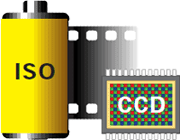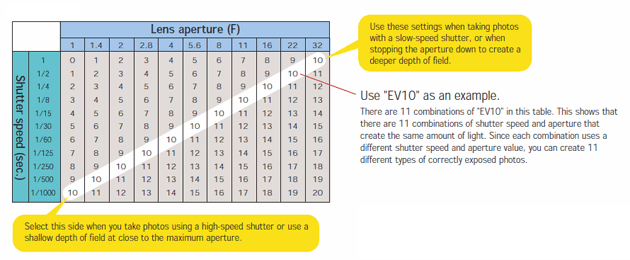Text begins from here.

 |
In the case of underexposure, the amount of light is smaller, causing the photo
to become dark. Conversely, in the case of overexposure the amount of light is
large which causes the photo to become whitish. To obtain an optimal
exposure, exposure control is needed, i.e. , control of film sensitivity, lens
aperture and shutter speed. Controlling exposure is the most basic principle in
photography. Exposure amount is often expressed as an "EV" value. |
 |
 Film sensitivity indicates how sensitive a film (or CCD) is to light. This sensitivity is represented using ISO values, such as ISO100 or ISO200. The larger the ISO value becomes, the greater the film/sensor's sensitivity to light. Similarly, the smaller the ISO value becomes, the less the film/sensor's sensitivity to light. |
 Much like the pupil of the human eye, the amount of light passing through the lens can be controlled by changing the lens aperture value. As this value increases and the aperture becomes smaller, the amount of light passing through the lens decreases, and as it decreases and the aperture becomes larger, the amount of light increases. |
 After the shutter is opened, the period of time that light strikes the film can be controlled via the shutter speed. When the shutter speed is high, the amount of light allowed to enter the camera from the lens is small. Similarly, when the shutter speed is low, the amount of light entering the camera from the lens is large. |
 Final exposure is: (Film sensitivity) x (Lens aperture value) x (Shutter speed) |
|

|

|

|
Underexposure The overall image is dark. Detail and shadow sections have turned to black. |

|

|

|

|

|
|

|

|

|
Optimal exposure |

|

|

|

|

|
|

|

|

|
Overexposure The overall image is whitish. Detail and highlight sections have blown out. |

|
 |
"EV" indicates the amount of light (exposure amount) obtained from the combination of "lens aperture value" and "shutter speed." As the EV value increases, the amount of light decreases, and as the value decreases, the amount of light increases. Looking at the EV table on the right, you can see that some aperture/shutter-speed combinations have the same exposure value. Every aperture/shutter-speed combination that has the same EV creates the same amount of light. Which combination you select depends on the image you envision. One increase in EV (EV1, 2, 3, etc.) indicates an increase of "one level," meaning an aperture value increase of "one aperture" or a shutter speed increase of double (2x) or half (1/2) speed. EV is an abbreviation for "Exposure Value." |
 |
